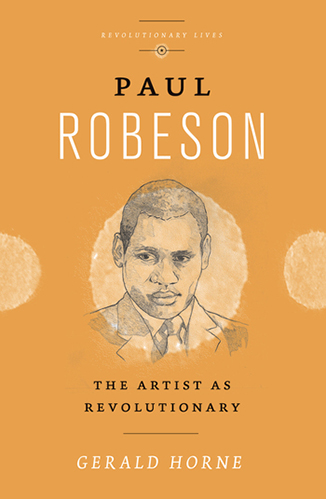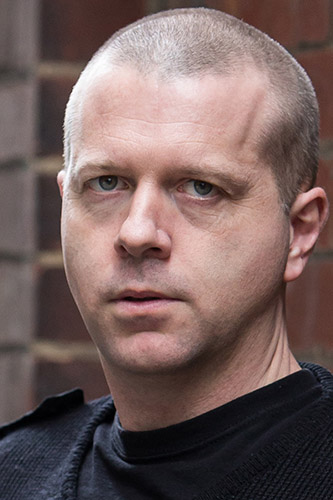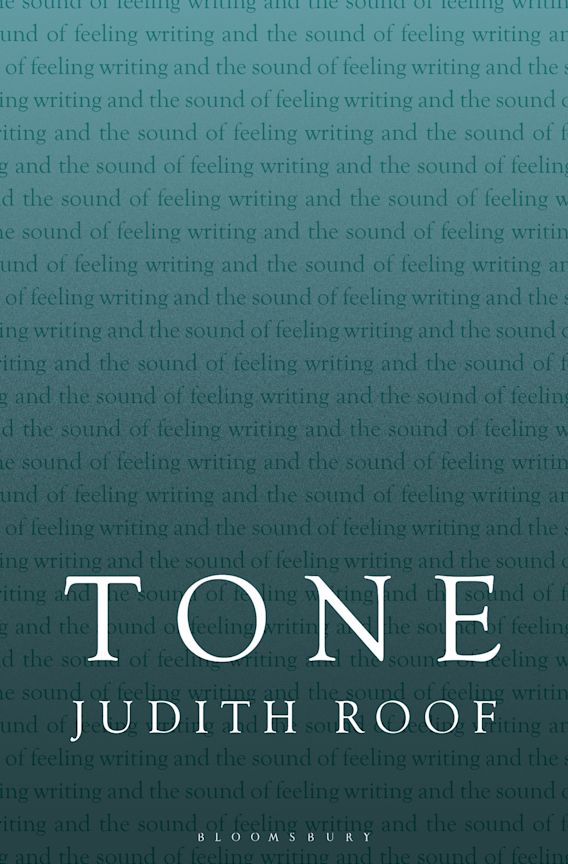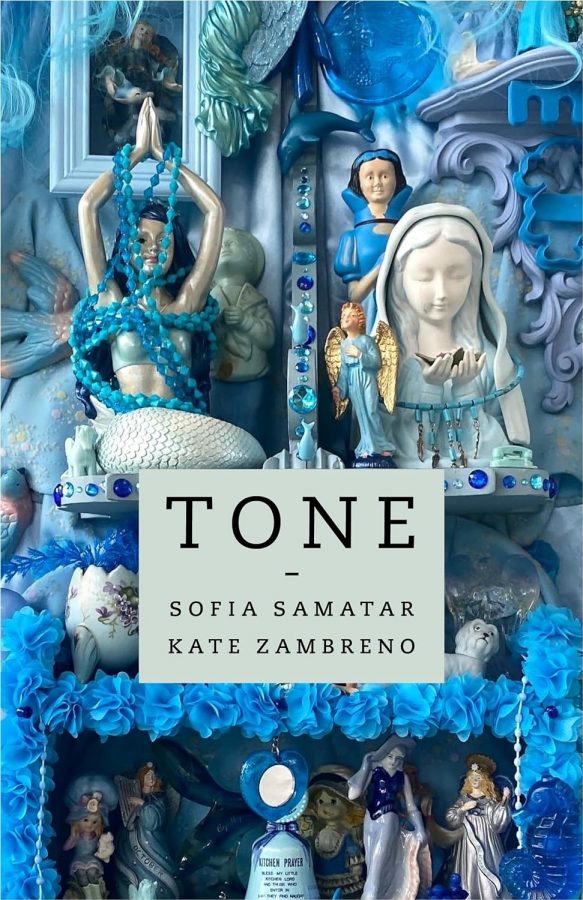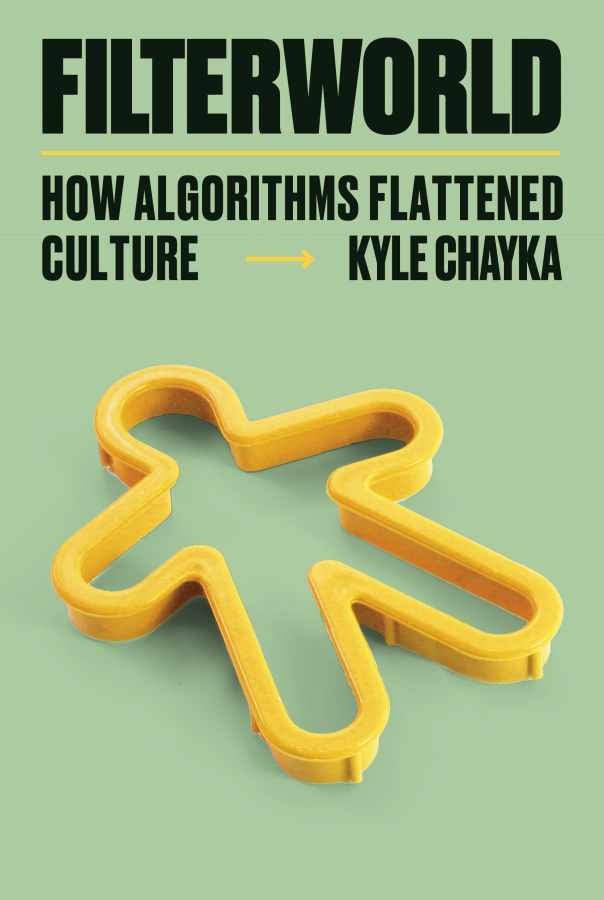I have said it before and say it again that the place for the Negro people to fight for their freedom is here at home.
You might think that’s Muhammad Ali: a snippet, perhaps, from one of the anti-Vietnam statements that circulated in the wake of his death. But it’s not. It’s Paul Robeson on Korea. In the days after Ali’s death, a Facebook friend circulated a cover image from the African Communist, the journal of the South African Communist Party. The headline from issue 33 in 1968 reads ‘Africa in America: Our people in the US’. It depicts Martin Luther King, Malcolm X, WEB du Bois, Paul Robeson and Ali. Back then a heavyweight boxer might have seemed the anomalous member in the revolutionary pantheon. Today, however, Paul Robeson’s the odd man out. Insofar as he’s recalled at all (at least in the developed world), it’s for the deep notes in ‘Ol Man River’ rather than for his politics.
Gerald Horne begins his new book, Paul Robeson: The Artist as Revolutionary with an acknowledgement of Robeson’s excision from public memory, a process that began while the performer still lived. ‘Paul Robeson – activist, artist, athlete – experienced,’ he writes, ‘a dramatic rise and fall, perhaps unparalleled in US history. From consorting with the elite of London society and Hollywood in the 1930s, by the time he died in 1976, he was a virtual recluse in a plain abode in a working-class neighbourhood of Philadelphia.’
Horne holds the John J. and Rebecca Moores Chair of History and African American Studies at the University of Houston. His previous works include studies of the African American communists William Patterson and WEB du Bois. In this excellent new book, he identifies Robeson as a neglected precursor to the modern Civil Rights movement. ‘[Y]ou cannot fully appreciate how the Jim Crow system came to an end without an understanding of the life of Paul Robeson,’ he argues. ‘[I]t was only with Robeson’s fall that King and Malcolm could emerge as they did; the undermining of Robeson created a vacuum that these two leaders filled.’
Horne mentions Muhammad Ali only in passing (he notes that one of Robeson’s pet projects – a movie version of Howard Fast’s novel Freedom Road – eventually came to fruition with Ali in the lead role). Nonetheless, the boxing legend’s recent death provides a useful frame to put Robeson’s achievements and subsequent historical eclipse in context. While Ali (born 1942) was the grandson of a slave, Paul Robeson (born 1898) was the son of one. His father, William Drew Robeson, escaped from bondage on a North Carolina plantation during the American Civil War. Slaves were usually forbidden both to read and to preach. Perhaps for that reason, William procured himself a classical education at Lincoln College and eventually became a Presbyterian minister. Thus, where Ali was a streetwise showman, Paul Robeson (born 1898) was taught to revere high culture, formal elocution and personal dignity, a legacy that shaped his later public persona.
Nevertheless, the extraordinary racism of twentieth century America presented the two men with similar dilemmas. ‘Boxing was nothing,’ Ali once said. ‘It wasn’t important to me at all. Boxing was just a means to introduce me to the world.’ Indeed, Ali’s later achievements – his political interventions but also his performances on stage, his film roles, his books – would not have been possible without his athletic success.
Though Robeson won a scholarship to Rutgers in 1915, he, too, might be said to have introduced himself through sport, since none of his academic achievements brought him as much attention as his athletic prowess, particular as a footballer (though he also excelled in a variety of other sports). Horne cites Lou Little’s assessment of Robeson as one of the greatest players in the history of football. Back then, the sport was extraordinarily violent, particularly for a black player, who was invariably the target of racist attacks. Robeson’s ability to defend himself – ‘Oh! Oh! I am so sorry!’ he would say, as he lowered another unconscious opponent to the ground. ‘My, my – I do hope I haven’t hurt you!’ – led to an invitation to fight Jack Dempsey, the great white boxer of the era. According to Alexander Woollcott, more than a million dollars changed hands on the prospect of him becoming heavyweight champion.
‘Robeson’s sterling success on athletic battlefields,’ says Horne, ‘unsettled the rudiments of white cum male supremacy, paving the way for desegregation.’ Robeson came to agree. In the fifties, when he wrote his memoirs, he consciously exaggerated his own physical clashes on the football field. As he explained to his son, ‘it’s good and healthy in today’s America for white people who view me as their favourite Negro to understand that I might deliberately kill a lyncher.’
In 1940 Robeson sang a tribute (with music by Count Basie and lyrics by Richard Wright) to the legendary fighter Joe Louis. As Mike Marqusee says, ‘King Joe’ presents Louis as ‘a creation of black America’ – a political as well as sporting hero.
But that all came later. In the twenties, the young Robeson was appalled at the invitation he take up prize-fighting, a sport associated with thuggish criminality. ‘I would have done anything rather than that,’ he later said. ‘Anything!’ Yet he soon encountered the restrictions that Ali spoke of, the racist boundaries limiting the options of talented African Americans. Though he graduated with a legal degree from Columbia, he abandoned his practice when a stenographer told him, ‘I never take dictation from a nigger’.
He embraced the stage for the same reason that Ali took up the gloves: simply, it was one of the few choices open to him. In 1925, he and the African American arranger Lawrence Brown gave a triumphant performance consisting entirely of spirituals, reclaiming the so-called ‘sorrow songs’ for the Harlem Renaissance. In London in 1930, he became the first actor of African descent since Ira Aldridge in the nineteenth century to star in a major production of Othello, definitively smashing the myth that black actors could only play minor or comic roles. Horne notes how deeply Robeson grappled with Shakespeare, struggling for an interpretation of the Bard’s deeply ambiguous text through which he could make an anti-racist statement. ‘Playing Othello provided Robeson,’ he argues, ‘with a profounder understanding of white supremacy; to that extent, it was art that helped to drive him to revolutionary understanding.’
Britain was also the home of a vibrant labour movement and a scattering of black intellectuals, a country that, as Horne notes, ‘in a dialectical fashion … had become a leading coloniser and imperialist nation and simultaneously produced some of the sterner critics of these systems of exploitation.’ In 1937, Robeson pledged his support for the Spanish Republic, with the famous declaration: ‘The artist must take sides. He must elect to fight for freedom or slavery. I have made my choice.’ Crucially, Robeson understood the war in Spain not only as a struggle against Franco’s Nationalists but also a battle against white supremacy at home. Langston Hughes expressed the importance of Spain to black America in a poem written in the form of a letter home from an African American volunteer, explaining ‘Fascists is Jim Crow peoples, honey/And here we shoot ‘em down.’ Likewise, when Robeson visited Moscow, he applauded Soviet Union for its official opposition to racism at a time when segregation ruled throughout the US.
In other words, Robeson’s politicisation involved the simultaneous embrace of socialism, black liberation and anti-colonialism, aims that he understood as fundamentally entwined.
Robeson’s greatest popularity coincided with the second world war, especially once the US and the Soviet Union allied against the Nazis. With the American government actively promoting public support for its new Russian ally (‘We are going to get along with [Stalin] and the Russian people,’ explained President Roosevelt, ‘very well indeed’), Robeson’s politics seemed patriotic rather than subversive. He was depicted clasping hands with Eleanor Roosevelt – ‘a symbol,’ Horne says, ‘of the “popular front” or the alliance that fascism had impelled, driving together liberals and radicals’ – and in 1943, Time magazine proclaimed him ‘probably the most famous living Negro.’
His friend CLR James explained, ‘I do not believe that any human being in the twentieth century … achieved the world-wide fame and recognition that Paul Robeson did.’ During that time, Robeson used his extraordinary profile to campaign against segregation. When he revived his Othello for US audiences, for instance, he insisted on a contractual stipulation allowing him to walk off stage if black audience members had been seated separately from whites. According to Horne, ‘Robeson was a kind of Pied Piper of anti-Jim Crow, journeying from city to city inspiring fellow crusaders ….’
It’s here that the comparison with Ali again becomes useful. In February 1964, the young Cassius Clay unexpectedly defeated the heavily-favoured Sonny Liston. Clay announced immediately that he was joining the Nation of Islam. At that time, white Americans knew of the Nation of Islam primarily through Mike Wallace’s TV documentary, The Hate that Hate Produced, in which they were told that ‘Black Muslims’ judged the white man guilty for racial crimes. ‘The sentence,’ Wallace warned, ‘is death.’
By associating himself with the Nation of Islam, Muhammad Ali (as he was now known) broke with the American mainstream in the most shocking way possible. The American writer Dave Zirin explains:
There are no words for the firestorm [his announcement caused]. The champ was with a group that called white people devils and stood unapologetically for self-defense and racial separation. Not surprisingly, the men of the conservative, mobbed-up, corrupt fight world lost their minds …. Ali was attacked not only by the sports world, but also by the respectable wing of the Civil Rights Movement.
Ali’s opposition to the war in Vietnam politicised that break even further – and, in due course, brought the full force of the state crashing down on him. In 1966, Ali refused to register for the draft. When his case came to court in 1967, he was sentenced to five years gaol. He lost his passport, he was stripped of his title, and prevented from fighting for four years at the peak of his athletic ability.
The Robeson story follows a similar pattern, though it unfolds at a different pace. As the second world war came to a close, Robeson initiated a campaign to prevent a wave of lynchings from whites intent on the restoration of the pre-war order (as per the so-called Red Summer of 1919). As Jordan Goodman notes in his Paul Robeson: A Watched Man, the people Robeson induced to sponsor his American Crusade to End Lynching included Albert Einstein, Artie Shaw, Frank Sinatra, Lena Horne, Larry Adler, Gregory Peck, Gene Kelly, Orson Welles, Canada Lee, Yip Harburg and Oscar Hammerstein II, as well as a host of religious leaders, scientists and politicians.
That, however, was the last gasp of the Popular Front. If, during the second world war, progressivism enjoyed a certain vogue, after Churchill’s ‘Iron Curtain’ speech Robeson’s sympathy for the Communist Party and the Soviet Union became as scandalous as Ali’s embrace of the Nation of Islam.
On 20 April 1949, Robeson addressed an international peace conference in Paris. African Americans would no longer tolerate segregation, he explained. ‘We shall not make war on the Soviet Union. We shall support peace and friendship among all nations, with Soviet Russia and the People’s Republics.’ The speech was widely reported in the American press, and Robeson returned to massive hostility in the US. That year, an anti-communist mob attacked a Robeson concert near the town of Peekskill, with thugs chanting ‘Lynch the fucking niggers!’ as they beat up attendees.
Undaunted, Robeson attended the National Labor Conference for Negro Rights in Chicago. There, he denounced US involvement in Korea with a rhetoric very similar to Ali’s ‘no Vietcong ever called me nigger’ quip:
Mr Truman calls upon us to save the so-called Western democracies from the ‘menace’ of Communism. But ask the Negro ministers in Birmingham whose homes were bombed by the Ku Klux Klan what is the greatest menace in their lives! … Ask the weeping mother whose son is the latest victim of police brutality. Ask Maceo Snipes and Isaiah Nixon, killed by mobs in Georgia because they tried to exercise the constitutional right to vote. Ask any Negro worker receiving unequal pay for equal work, denied promotion despite his skill and because of his skin, still the last hired and the first fired. Ask fifteen million American Negroes, if you please, ‘What is the greatest menace in your life?’ and they will answer in a thunderous voice, ‘Jim Crow Justice! Mob Rule! Segregation! Job Discrimination!’ – in short white supremacy and all its vile works.
The backlash that Robeson faced was predictably intense. As early as 1946, the actor Adolphe Menjou had told the House Hearings Regarding the Communist Infiltration of the Motion Picture Industry that people could be identified as communist if they ‘attend[ed] any meetings at which Mr Paul Robeson appeared and applaud[ed] or listen[ed] to his Communist songs.’ By 1952, he became, as Pete Seeger put it, ‘the most blacklisted performer in America’. No concert promoter would book him; no theatre producer would let him act. Almost overnight, his records disappeared from the shops, the radio no longer played his songs and his movies didn’t screen.
It’s worth noting that, like Ali, Robeson was attacked not only by the Right but by liberals and ‘respectable’ African American leaders. The baseball legend Jackie Robinson was induced to denounce him; the NAACP published a series of articles calling him a puppet of Moscow; the boxer Sugar Ray Robinson labeled him a Communist propagandist. Like Ali, Robeson was punished through the confiscation of his passport. That meant that he too he lost the best years of his career – barred from singing or acting not only within the US but also anywhere else in the world.
Robeson could, of course, have recanted. Had he done so, his career would have been immediately restored (who now remembers Sinatra’s leftism?). Instead, he remained entirely uncompromising. In 1956, he appeared before a HUAC committee investigating the use of passports ‘in the furtherance of the objectives of the Communist conspiracy’. When Gordon Scherer, the most senior Republican panelist, asked why Robeson didn’t move to Russia, he snapped back: ‘Because my father was a slave, and my people died to build this country, and I am going to stay here, and have a part of it just like you. And no Fascist-minded people will drive me from it. Is that clear?’
In 1958, when his passport was returned, Robeson embarked on an international comeback tour, which included a final production of Othello and an Australasian tour. But his health had been ruined by the extraordinary pressure placed upon him – and, in 1961, he suffered a breakdown that brought a premature end to his public life.
Ali’s opposition to Vietnam came at the cusp of a period of political ferment, a radicalisation that enabled him to overcome his temporary isolation. Robeson’s stance against Korea coincided with a deep downturn in the fortunes of the Left, something that partly accounts for his continuing eclipse. In that respect, the state campaign achieved its aim. Though, for instance, Robeson expressed his solidarity with the Montgomery bus boycott, by then he’d been so effectively marginalised that he could do little more than offer moral support for the new activists of the sixties. In fact, Horne notes that the modern civil rights movement emerged, in many ways, from the defeat of the Old Left. He writes: ‘The political trend that Robeson represented – revolutionary socialism – had been effectively undermined among black America, through a deft administering of bludgeoning of those like himself and anti-Jim Crow concessions. But filling the resultant ideological vacuum was the Nation of Islam, which had arisen in the 1930s when Robeson was then ascendant and did not begin to take off until Robeson appeared to be in eclipse.’
But that pushes us to another aspect of the relative fortunes of the two men’s reputations, one that can be illustrated through their relationships with Indigenous Australia.
Last year, Joe Gorman wrote an interesting account of Muhammad Ali’s visit to Australia in March 1979. Knowing that Ali was in the country, Indigenous activists decided to gatecrash his press conference. ‘We grabbed a camera and went to the Hilton Hotel,’ explained Gary Murray. “We put stickers on the camera and on our hats saying ‘Koori Press’ so they’d let us into the press conference. We got there at the end and we asked if he’d like to meet some black people. He said yes, and to meet him around the back in five minutes.’ Ali’s agreement to come to the Aboriginal Health Centre in Fitzroy was inspirational. ‘He came to see blackfellas!’ Glenda Thorpe told Gorman. ‘It made people feel special – it said to the rest of the world, we got a story, we got something to say and it’s not good. That recognition, you know, it was listen to our story. We couldn’t get on the international arena anywhere.’
Ali’s gesture was hugely symbolic – as was Robeson’s encounter with Indigenous Australia nearly twenty years earlier. But Robeson’s visit also hinted at a deeper kind of solidarity. Throughout his tour of Australia in 1960, Robeson spoke out repeatedly against anti-Aboriginal racism. When he expressed a desire to meet with Indigenous activists, Faith Bandler, head of the Federal Council for the Advancement of Aboriginal and Torres Strait Islanders, came to the Hotel Australia to see him. She screened him a documentary about the appalling conditions facing Indigenous people in the Warburton Ranges. By the end of the film, Robeson was in tears. He told Bandler that, after the tour ended, he’d do whatever he could to help. It was a significant pledge, for, even after the campaign against him, Robeson was linked with anti-colonial organisations throughout the world and was hugely respected within the labour movements of the US, Britain and Australia (famously, he sang at the Sydney Opera House construction site to serenade the unionists building the hall).
To put it another way, Robeson’s affiliation with the Old Left equipped him with both a way of understanding the world and a set of strategies to change it. The utility of the solidarity he might have offered can be grasped through a contemplation of the iconic Wave Hill dispute later in the decade, where trade union support helped the Gurindji people to defeat British pastoral company Vestey.
Robeson’s breakdown soon after the Australian visit meant he couldn’t deliver on his promise. Nevertheless, his discussions with Bandler illustrate a key point in Horne’s book: namely that Robeson’s politics, including his anti-racism, rested upon a belief in the necessity and the possibility of working class unity. As Robeson explained in 1938, even in the movie business:
The workers in the studios have the power and they ought to realise it. During one of my films I was struck by this very forcibly. There was everybody on the set, lights burning, director waiting, head of the company had just come on to the set with some big financial backer to see how things were gong – and what happened? Everything stopped. Why? Because the electricians had decided it was time to go and eat, they just put out the lights and went and ate. That’s my moral to your readers.
Horne rejects the suggestion that Robeson’s association with socialism ‘has been discrediting to his legacy.’ I am less certain about that.
Certainly, Robeson was an unabashed supporter of Stalinism, something that has to be acknowledged, as a moral and political imperative. To his shame, he endorsed the Show Trials, and denied (and justified) the repression that sent millions to the gulags. He adhered to every twist and turn of Stalin’s policies as the Moscow line shifted before, during and after the Molotov-Ribbentrop Pact. He embraced the Popular Frontism that led to such disastrous results in Spain and elsewhere.
Yet one rather suspects that Robeson’s relative obscurity today stems from his political strengths rather than his weaknesses. Without wishing to downplay Ali’s tremendous courage, symbolic gestures remain relatively easy to recuperate. By contrast, as Horne says, Robeson was ‘both a partisan of the most degraded sector of humanity – Africans – while being an advocate of a working class internationalism that embodied universality’. That’s a profoundly unpopular stance today, rejected both by the Right and (unfortunately) by much of the Left.
Consider a fascinating recent essay by Assad Haider about the 2014 student occupation against fee hikes at Santa Cruz. Haider uses a 1964 debate between Amiri Baraka (LeRoi Jones) and Philip Roth to frame a polemic about the pernicious effects of identity politics in that struggle, which collapsed when activists proved entirely unable to generalise their campaign. He seeks to historicise the problem, relating it to the disintegration of the Left’s commitment to a radical universalism.
‘With,’ he says, ‘the possibility of integrating social equality into American culture destroyed, by both political repression and industrial decline, politics is reduced to the anxious performance of authenticity. The policing of personal identity now unites McCarthyism and the residues of the New Left. If the “personal is political,” it is in the sense we are left with no practice of politics outside of the fashioning of our own personal identities, and surveillance of the identities of others.’
He concludes with the suggestion that ‘the now firmly entrenched reduction of politics to identity has left social movements defenseless against subordination to the multicultural elite’. It’s an argument of considerable immediacy, given the Clinton campaign’s deployment of ‘feminism’ against radical critics or, perhaps, the bizarre weaponisation of queerness against ethnic or religious minorities. But it also illustrates the difficulties of rehabilitating Paul Robeson, a man whose career was predicated on the possibility and desirability of working class unity. Horne, for instance, claims even Robeson’s prodigious enthusiasm for language acquisition was ‘designed in part to illustrate the essential unity of humankind’, an ideal profoundly at odds with hegemonic individualism of today. But Haider’s essay is also a lament about the destruction of historical memory. That’s the point of his invocation of Baraka: Haider shows how activists have unwittingly resuscitated arguments the poet advocated in the mid-sixties, without any awareness of Baraka’s later change of heart. We can see, then, a cruel dialectic at work. The erasure of the Left’s history facilitates the deeply individualised politics Haider discusses, even as those politics render the Left’s history almost unintelligible.
The same problem can be presented in slightly different form by considering Robeson’s relationship with Ali’s mentor, Malcolm X. Malcolm left the Nation of Islam in March 1964, frustrated that the organisation didn’t put its radical rhetoric into practice. That also meant a break with Ali, who remained loyal to the group. As Malcolm reassessed his ideas, he sought a discussion with Robeson. A meeting between the two men was organised and then postponed due to Robeson’s poor health. Before it could be re-scheduled, Malcolm was shot dead.
What might have resulted from an encounter between two such giants? What accounting of the strengths and the weaknesses of the different traditions they represented might have been possible had the pair been able to consult? Even posing those questions illustrates the damage wreaked by the loss of radical continuity, with each generation forced to begin almost from scratch.
One suspects that a fully-fledged revival of interest in Paul Robeson depends upon an upturn in struggle that once more puts the issues he confronted on the political agenda. Until then, however, we can only be grateful for works like Gerald Horne’s new book.
